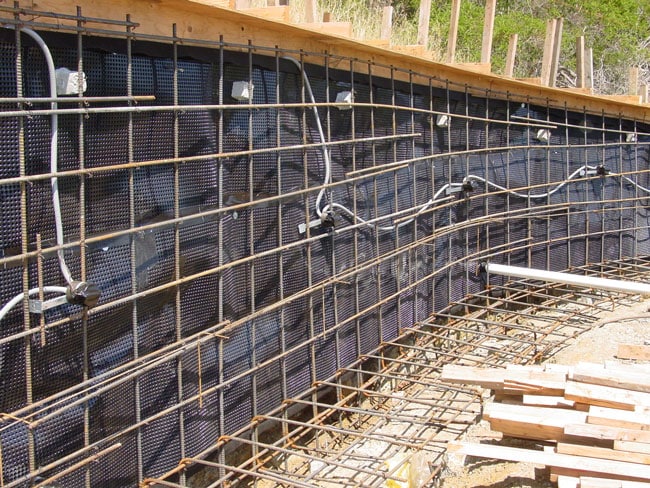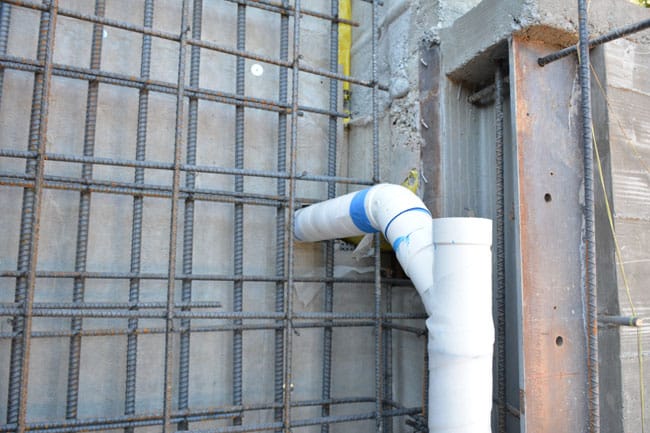Waterproofing Membranes
The membrane is typically applied to the exterior of the concrete foundation and wall where it comes in contact with water. Today, these membranes are very sophisticated and designed to permanently seal the concrete, provided that they are applied correctly and according to the manufacturer’s directions. We can categorize the modern membranes into two types.
Sheet Membranes
Liquid Applied Membranes
Numerous forms of liquid or fluid applied membranes have been developed by several manufacturers to address different conditions. The most common liquid applied membranes are Polyurethane-based. Others are Epoxy-based. Some Polyurethane membranes contain accelerators to aid in curing. Liquid applied membranes are typically installed with notched trawls, rollers or a heavy brush.
If you would like to learn more about waterproofing membranes for retaining walls, please contact SteelCore Builders.


